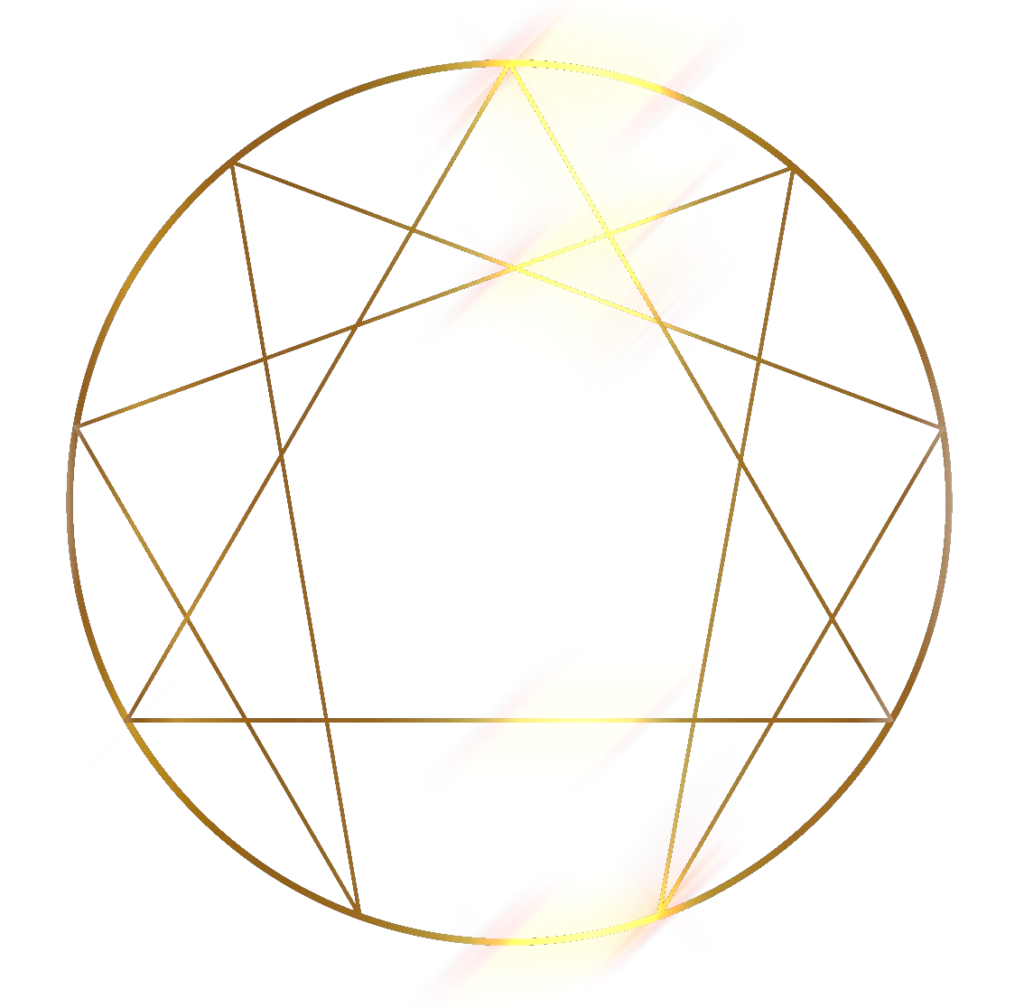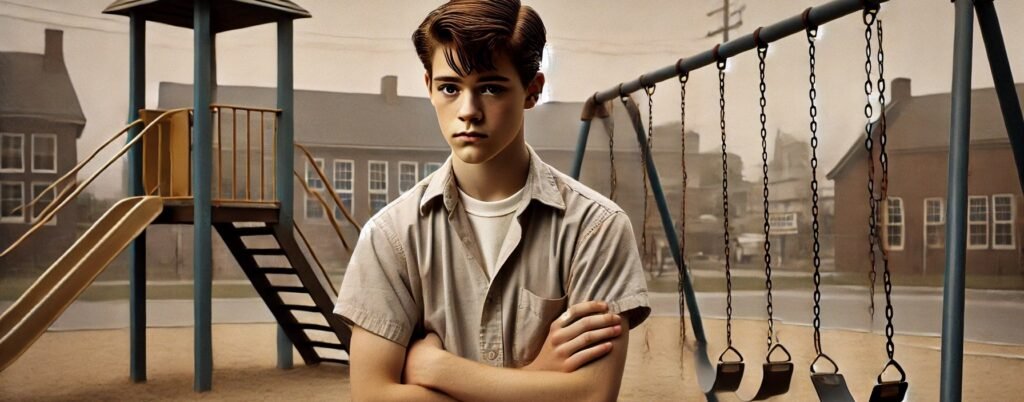Sexuality and Personal Growth
Though emerging from distinct cultural and philosophical traditions, the worlds of Tantra and the Enneagram offer profound insights when viewed through an integrative lens. Both systems address the interplay of human consciousness, desire, and transformation. By examining the ancient texts of Tantra alongside the psychological and spiritual frameworks of the Enneagram, a compelling dialogue emerges—one that illuminates the nature of human sexuality and personal growth.

Energy and Transformation
Tantra and the Enneagram emphasize energy as a driving force for growth and transformation. Tantra views sexual energy (Kundalini) as a potent source of spiritual awakening. The practices outlined in texts like the Vijnanabhairava Tantra harness this energy to transcend duality, turning primal desires into gateways for divine realization. Similarly, the Enneagram reveals how each type manages and expresses energy. Understanding these patterns provides a roadmap for individuals to channel their energy, fostering self-awareness and integration consciously.
For instance, a Type 8 (The Challenger) often radiates intense, assertive energy, which can sometimes manifest as control or domination. This energy can be redirected through Tantric principles to cultivate deeper intimacy and authentic connection. In contrast, a Type 5 (The Investigator), who conserves energy and withdraws to feel secure, might use Tantric awareness to embrace emotional expression and vulnerability.
As the Tantrasara describes, “Shakti dances in infinite forms, creating and dissolving the cosmos, while Shiva, in his stillness, witnesses. The union of these principles within the practitioner awakens dormant energies, dissolving duality and revealing the sacred within.” This dynamic energy and stillness interplay mirrors the Enneagram’s transformative pathways, where fixations give way to essence through conscious integration.
Further underscoring this perspective, the Kularnava Tantra states, “Through the union of Shiva and Shakti, the universe is created. Within each of us, this divine dance continues, waiting to be awakened.” This reinforces the transformative potential of harmonizing these energies, paralleling the Enneagram’s vision of transcending ego-driven behaviors.
Beyond individual growth, these principles can influence group dynamics. Imagine a team where Type 3s (The Achievers) harness their energy for shared goals while Type 7s (The Enthusiasts) introduce dynamic, innovative ideas. Collective transformations become possible by blending the transformative insights of Tantra’s energy work and the Enneagram’s awareness of energy flows.

Historical Roots and Context
The origins of both Tantra and the Enneagram provide deeper insights into their shared goals. Tantra, emerging from ancient Indian traditions, presents a cosmological framework where the physical and spiritual are intertwined. Central to this worldview is the union of Shiva (consciousness) and Shakti (energy). This interplay mirrors the Enneagram’s exploration of the dynamic forces within the human psyche—forces that must be balanced and integrated for growth.
The Vijnanabhairava Tantra describes 112 meditative techniques to explore states of consciousness; many parallel the Enneagram’s focus on presence and awareness. For example, meditating on breath transitions in Tantra aligns with the Enneagram’s practices for disrupting fixation patterns and reconnecting with essence. The text states, “When one’s attention is absorbed in the pause between the inhalation and the exhalation, the essence of the universe reveals itself. In that stillness, the seeker becomes the infinite.”
Similarly, the Enneagram’s Sufi origins emphasize the spiritual journey through understanding the self. These traditions view the ego’s patterns as veils obscuring one’s essence. Like Tantra, the Enneagram proposes methods to transcend these patterns and rediscover unity. As Georg Feuerstein explains in Tantra: The Path of Ecstasy, “Tantra is not about seeking pleasure for its own sake, but about using pleasure as a vehicle for spiritual transformation.” This aligns with the Enneagram’s purpose of using self-awareness as a transformative tool.
Together, these systems illuminate the universal quest for liberation from the constraints of the ego and reconnection with the essence of being.

Shadow Work and Integration
Tantra invites practitioners to embrace the shadow—those parts of ourselves we fear or reject—as essential elements of spiritual growth. Tantra fosters wholeness and self-acceptance by integrating fears, desires, and vulnerabilities. Similarly, the Enneagram maps the ego’s defenses and core fears, offering a structure for shadow work. By confronting these shadows, individuals can transcend limiting beliefs and embrace their fuller selves.
The Kularnava Tantra offers more profound wisdom: “Desires are neither to be indulged recklessly nor rejected outright. They are the currents of life itself. Through awareness and discipline, they become the vehicle of liberation.” This perspective resonates with the Enneagram’s treatment of core fears and desires as pathways to transformation. For example, a Type 2 (The Helper), who often suppresses personal needs to gain approval, may explore their boundaries and desires through Tantric practices. A Type 6 (The Loyalist), who struggles with anxiety and trust, might use insights from both systems to cultivate surrender and inner security.
As A.H. Almaas explains in Facets of Unity: The Enneagram of Holy Ideas, “The Enneagram points to a deeper dimension of human experience, beyond the personality, where we can connect with our true essence and experience a sense of wholeness and unity.” This insight dovetails with Tantra’s emphasis on embracing all aspects of self as a path to liberation.
Shadow integration also plays a crucial role in relationships. Partners with opposing Enneagram fixations—such as a Type 8’s assertiveness and a Type 9’s tendency to avoid conflict—can use Tantric meditative techniques to explore their dynamics, ultimately fostering mutual growth and deeper connection.

Mindfulness and Presence
Central to Tantra and the Enneagram is cultivating mindfulness and presence. Tantra’s emphasis on conscious living—paying attention to sensations, emotions, and thoughts without judgment—mirrors the Enneagram’s call for awareness of personality patterns. Both systems guide practitioners toward inhabiting the present moment more fully.
The Vijnanabhairava Tantra emphasizes this in poetic terms: “O gazelle-eyed one, the mind becomes tranquil when the breath is steady. The veil of ignorance is lifted by fixing awareness on the space where the breath turns from inhalation to exhalation, and the seeker realizes their oneness with the infinite.” This description can guide a Type 7 (The Enthusiast), who often seeks stimulation to avoid discomfort and cultivate stillness and presence.
Moreover, mindfulness bridges the gap between fixation and essence. For example, a Type 1 (The Reformer) who practices Tantric mindfulness can shift from rigid perfectionism to compassionate self-acceptance, transforming their inner critic into an ally for growth.

Conscious Relationships
Tantra views relationships as sacred spaces for spiritual growth, emphasizing mutual respect, vulnerability, and authentic communication. The Enneagram complements this by providing a framework for understanding different communication styles and relational needs, fostering empathy and compassion in partnerships.
The Hevajra Tantra describes relationships as more than physical unions: “Union is not merely of bodies but of energies. When two souls meet with awareness, they reflect the divine dance of opposites, merging into a single flow. This is the ultimate form of intimacy and the gateway to liberation.” This insight enhances the discussion of how Tantra and the Enneagram guide couples to deeper intimacy. For example, a Type 1 (The Reformer) and a Type 7 (The Enthusiast) might struggle with contrasting approaches to structure and spontaneity. Yet, they could harmonize these differences through conscious practices as part of their shared spiritual journey.
In The Enneagram in Love and Work, Helen Palmer explains, “By understanding our Enneagram type, we can gain valuable insights into our patterns in relationships, including our fears, desires, and ways of communicating.” This knowledge complements Tantra’s focus on communication as a path to intimacy.

Embodiment and Pleasure
Tantra celebrates the body as a sacred vessel and encourages individuals to experience pleasure as a pathway to spiritual awakening. The Enneagram sheds light on how personality types influence one’s relationship with the body and pleasure, revealing areas for growth and exploration.
Georg Feuerstein captures Tantra’s essence in Tantra: The Path of Ecstasy: “In the Tantric view, the body is not an obstacle to spiritual realization but its vehicle. Every sensation, every breath, every movement holds the potential for awakening. By honoring the body as sacred, we honor the divine.” This philosophy can guide a Type 3 (The Achiever) to reconnect with their body and experience pleasure intrinsically rather than as a means to external validation.
Social and cultural conditioning often distort our relationships with pleasure. Tantra’s practices—such as sensory meditations and rituals celebrating the body—help individuals reclaim their inherent right to joy. Combined with the Enneagram’s insights into type-specific blockages, these practices unlock profound healing potential.

Instinctual Subtypes and Tantric Energy
The Enneagram’s instinctual subtypes—self-preservation, social, and sexual—add depth to this exploration by highlighting the primal drives influencing behavior. Each subtype offers a unique lens for understanding how individuals navigate intimacy and connection.
In The Complete Enneagram, Beatrice Chestnut explains, “The instinctual subtypes add another layer of complexity to the Enneagram, revealing how our basic survival instincts influence our motivations and behaviors.” This understanding complements Tantra’s focus on energy flows within the body.
The Guhyasamaja Tantra teaches: “Fear arises from the illusion of separation. When the practitioner recognizes the interconnectedness of all beings, fear dissolves like mist before the morning sun. This clarity opens the heart to love and compassion.” This insight is particularly resonant for the self-preservation and social subtypes, who often grapple with security and belonging.
- Self-Preservation Subtype: Focused on security and well-being, this subtype may benefit from grounding Tantric practices that foster safety and embodiment. For example, a Self-Preservation Five can create secure spaces for intimacy, gradually overcoming tendencies toward isolation.
- Social Subtype: Oriented toward belonging and community, this subtype thrives in practices emphasizing connection and shared experiences. A Social Two, for instance, can move beyond people-pleasing to explore authentic mutuality in relationships.
- Sexual Subtype: Driven by intensity and passion, this subtype resonates with Tantra’s exploration of deep connection and merging. A Sexual Four might confront fears of rejection and fully embrace the vulnerability required for transformative intimacy.
When these subtypes interact in relationships, Tantra’s focus on honoring diversity within unity provides a model for harmony. Understanding instinctual patterns allows couples to transcend misunderstandings and foster mutual support.
Creative Energies in the Enneagram
The interplay of Shiva (consciousness) and Shakti (energy) in Tantra mirrors the dynamic energies described in J.G. Bennett’s understanding of the Enneagram. Each Enneagram type reflects a unique fusion of stillness and dynamism, shaping their creative potential.
- Type 1 (The Reformer): Rooted in Shiva’s order, Type 1s create structure and clarity. They might embrace Shakti’s spontaneity to balance their perfectionist tendencies.
- Type 4 (The Individualist): Expressing Shakti’s dynamic creativity, Type 4s channel emotional intensity into art and self-expression. Cultivating Shiva’s stillness can ground their often turbulent inner world.
- Type 7 (The Enthusiast): Radiating Shakti’s exuberance, Type 7s innovate and explore with boundless energy. Integrating Shiva’s focus enhances their ability to manifest ideas.
Through the Enneagram’s framework and Tantra’s energetic practices, individuals can align these forces to unlock their creative and spiritual potential.

Liberation from Conditioning
Both systems confront the role of the superego in shaping our relationship to sexuality. The Enneagram’s emotional triad of anger, fear, and shame reveals how these emotions fuel repression, while Tantra provides tools to transcend these limitations.
The Kularnava Tantra states, “In the moment of fierce longing, when the heart burns with desire or grief, one should not turn away. Instead, enter that flame, which will consume the ego, leaving only the essence of the self.” This reflects the Enneagram’s teaching that emotions when consciously faced, lead to liberation.
In The Way of the Superior Man, David Deida captures the challenge of intimacy: “Your fear of being vulnerable is the greatest barrier to experiencing true intimacy.” Tantra and the Enneagram together provide a framework for moving beyond this fear, fostering deeper connection and authenticity.
- Anger (Type 8): Repressed anger may manifest as control or domination. Tantra encourages healthy expression, transforming this energy into passion and connection.
- Fear (Type 6): Anxiety around vulnerability can hinder intimacy. Tantric practices cultivate trust and surrender, breaking cycles of avoidance.
- Shame (Type 2): Internalized shame may suppress desires. Tantra’s celebration of embodiment and pleasure offers a pathway to self-acceptance.
By addressing these dynamics, Tantra and the Enneagram together dismantle the barriers imposed by conditioning, fostering authentic and liberated sexual expression.

Tantra, Enneagram, and the Sacred Union
At the heart of both systems lies the potential for a sacred union—whether between Shiva and Shakti or the integration of Enneagram polarities. This integration speaks to the universal yearning for wholeness, a return to essence.
The Enneagram’s paths of growth often involve harmonizing opposites. For example, Type 3s (The Achievers) can balance their drive for success with the stillness and presence of being. Similarly, Type 9s (The Peacemakers) can move from complacency to active engagement. Tantra’s practices for merging Shiva’s consciousness with Shakti’s energy provide direct, embodied ways to access these growth paths.
In Introduction to Tantra, Gavin Flood describes this union beautifully: “The relationship between teacher and student in Tantra reflects the cosmic dance of Shiva and Shakti. It is a dynamic of mutual growth, where both are mirrors to each other’s divine essence.” This mirrors the relational growth explored in the Enneagram, where personal dynamics become opportunities for spiritual evolution.
Tantra invites practitioners to see their romantic or otherwise relationships as microcosms of this cosmic union. The practices of sacred sexuality reflect the interplay of dual forces, encouraging participants to honor the divine within themselves and their partners. This resonates deeply with the Enneagram’s focus on relational dynamics as opportunities for growth.

Collective Transformation
Integrating Tantra and the Enneagram is not limited to individual transformation; it has profound implications for collective healing. By addressing the root causes of shame, fear, and division, these systems offer a framework for cultivating empathy, connection, and authenticity on a societal level.
Emily Nagoski, in Come As You Are, highlights the complexity of sexuality: “Sexuality is a complex and multifaceted aspect of human experience, influenced by biological, psychological, and cultural factors. Understanding these factors can help us to cultivate a more positive and fulfilling relationship with our sexuality.” This aligns with Tantra and the Enneagram’s shared goal of fostering understanding and growth, both individually and collectively.
Integrating Tantra and the Enneagram offers pathways to unity and healing in a world increasingly fragmented by societal divisions. Tantra’s philosophy of non-duality—where opposites like Shiva and Shakti merge to create harmony—reflects the possibility of transcending dualities in society. Similarly, the Enneagram helps us understand our internal divides and conflicts arising when individuals or groups operate from ego-driven patterns.
As the Vijnanabhairava Tantra reminds us: “The universe is not separate from you. You are the universe.” This teaching invites a radical shift in perspective. When applied to collective transformation, it suggests that by healing the self, we also contribute to healing the world. As revealed by the Enneagram, awareness of our patterns equips us to interact with others more compassionately, fostering connections that honor the whole.
On a societal level, rituals and practices rooted in Tantra—such as group meditations, conscious communication circles, or shared breathwork—can serve as tools for communal healing. These practices can break through layers of fear and shame, perpetuating systemic inequalities and fostering a sense of shared humanity.
The Enneagram’s focus on instinctual subtypes further complements this vision. Understanding these instincts in the context of societal dynamics can help address fundamental issues like resource allocation, group belonging, and relational harmony. For example, recognizing how a community prioritizes self-preservation instincts can clarify tensions around safety and security, enabling leaders to address these concerns with sensitivity and insight.
Together, Tantra and the Enneagram encourage a broader perspective that sees individual and societal growth as interconnected. These systems contribute to a more compassionate and equitable world by fostering environments where diversity and shared purpose coexist.

A Unified Path to Transformation
The synthesis of Tantra and the Enneagram creates a unique framework for exploring the intersections of personal, relational, and societal transformation. Tantra’s emphasis on the sacredness of all experience and the Enneagram’s focus on self-awareness and growth offer complementary paths that deepen our understanding of ourselves and our connections with others.
By integrating the wisdom of Tantra, which views sexuality, desire, and energy as sacred, with the Enneagram’s map of personality patterns and relational dynamics, we gain powerful tools for addressing individual challenges and collective wounds. As both systems teach, vulnerability is not a weakness but a doorway to deeper connection, authenticity, and transformation.
In this synthesis, the dance of Shiva and Shakti mirrors the Enneagram’s quest for integration—where opposites are reconciled and essence is revealed. This awakening is not merely an individual journey but ripples outward, inspiring others and reshaping the collective consciousness.
The journey toward integration may challenge us to confront fears, embrace our shadows, and engage in the vulnerable work of connection. Yet it also promises profound transformation—a life where our desires become sacred, our relationships become mirrors of growth, and our collective potential is realized. Together, Tantra and the Enneagram invite us to step into this dance, not as separate beings but as interconnected expressions of the divine.
Tantra, in its essence, is an embrace of the totality of existence. It sees the divine in all aspects of life, including the erotic. This perspective challenges the traditional separation between the spiritual and the material, inviting us to experience the sacredness of our embodied existence.

The Dance of Eros and Spirit
The “Divine Eros” concept encapsulates this Tantric perspective, suggesting a harmonious union between the erotic and the spiritual and recognizing that these two aspects of our being are not mutually exclusive but somewhat intertwined and complementary.
This perspective challenges the conventional view that the erotic is somehow less spiritual or even antithetical to spiritual growth. Instead, it suggests that the erotic, when experienced with awareness and reverence, can be a powerful catalyst for spiritual awakening.
With its insightful map of the human psyche, the Enneagram can further illuminate our understanding of divine eros. Each Enneagram type brings unique perspectives and challenges to integrating the erotic and the spiritual.
For instance, Type 1s, with their strong sense of morality and their desire for perfection, may struggle with accepting the erotic as a sacred aspect of their being. Type 2s, with their focus on giving and their fear of being unwanted, may need to reclaim their erotic desires and express them authentically. Type 3s, driven by achievement and recognition, may need to shift their focus from external validation to the internal experience of pleasure and connection.
By understanding our Enneagram type, we can identify and work through the challenges that may hinder our experience of divine eros. We can use the Enneagram’s wisdom to embrace our whole selves, including our erotic nature, and integrate it into our spiritual journey.
The Role of Desire
Desire, a key component of the erotic, is often seen as a source of conflict and suffering. However, Tantra suggests that desire can be a powerful force for transformation when channeled consciously.
The Enneagram can help us understand how each type experiences and expresses desire. Type 4s, for example, may experience desire with great intensity and longing, while Type 5s may approach desire with more caution and reservation. By recognizing our type’s patterns around desire, we can work with them skillfully and use desire as a catalyst for growth.
The Erotic as a Pathway to the Divine
Presence, a key practice in Tantra, is essential for experiencing the fullness of the erotic and the spiritual. By cultivating presence, we can become more attuned to our sensations, emotions, and thoughts, allowing us to experience the erotic with greater awareness and depth.

The Enneagram can help us understand how each type might resist or avoid presence. Type 7s, for example, may distract themselves with constant activity and stimulation, while Type 9s may merge with others and lose touch with their inner experience. By recognizing these patterns, we can use Tantric practices to cultivate greater presence and embrace the fullness of each moment.
Tantra suggests that the erotic, when experienced with awareness and reverence, can be a pathway to the divine. It’s an invitation to embrace the fullness of our embodied existence and to experience the sacredness of all aspects of life.
The Enneagram, with its insightful map of the human psyche, can guide us on this journey, helping us to understand our unique challenges and opportunities for growth. By integrating the wisdom of these two systems, we can embark on a path of self-discovery and transformation, embracing the erotic as a sacred expression of our divine nature.
Divine eros emphasizes the importance of relationships as a context for experiencing and expressing divine eros. It introduces the concept of the “relational field,” a dynamic space where two individuals come together and co-create a shared reality. This field can be a fertile ground for spiritual growth and the exploration of divine eros, mainly when both individuals are present, open, and committed to authenticity.
The Enneagram can help us understand the dynamics within the relational field, shedding light on how different types interact, communicate, and navigate challenges together. For example, a relationship between a Type 5 and a Type 2 might involve a dance between the 5’s need for independence and the 2’s desire for connection. Understanding these dynamics allows both individuals to consciously work with their patterns and create a more fulfilling and supportive relationship.
The Role of Inquiry
Inquiry, a central practice in the Diamond Approach®, is presented as a key tool for exploring the depths of our experience and uncovering the truth of our being. It involves bringing a curious and open mind to our sensations, emotions, and thoughts, allowing them to reveal their more profound meaning and significance.
In the context of divine eros, inquiry can help us explore our relationship with the erotic, our fears and desires, and how our Enneagram type influences our experience. By bringing a spirit of inquiry to our erotic experiences, we can deepen our self-awareness and move towards greater authenticity and freedom.
Embracing the Fullness of Being
Ultimately, the integration of Tantra and the Enneagram, enriched by the perspective of divine eros, is an invitation to embrace the fullness of our being. It’s a call to recognize the sacred in all aspects of life, including the erotic, and to live with greater awareness, presence, and authenticity.
We can embark on self-discovery and transformation by understanding our Enneagram type, engaging in Tantric practices, and cultivating a spirit of inquiry. We can move beyond the limitations of the ego and embrace the boundless dimensions of our being, experiencing the erotic as a sacred expression of our divine nature.




















